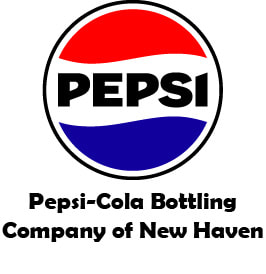The main focus of this program is to fully utilize and edit the existing resources in the town already. The main changes are to happen in the downtown near the Missouri River. One of the main edits to be made is to make the one-way street in front of the stores a two-way street. This is to be done by clearing extra space by the railroad and expanding the street with that space. Another change is to the levee: this will include making the levee more aesthetically appealing and improved to maintain its certification as being up to date. The cost of the improvement alone is estimated to be up to 1 million dollars.
A great point of interest of the DREAM Initiative is to create a downtown district that can produce sustainable revenue. It could produce anywhere from $2,000 to $45,000 each year. Some of the improvements could be eligible for payment through the CID ( credit card identification).
Some of the places in downtown New Haven that are to be changed or improved are the front street by the railroad, Lion’s Club Property, town steps, downtown alley, and the riverwalk. Others include a sidewalk connection for the levee sidewalk, new trash cans placed at specific intervals, a better-developed boat dock, and general beautification of the some other parts of the downtown area.
Part of the plan is to have the city and DNH (Downtown New Haven) discuss with Union Pacific about the possibility of making downtown a quiet zone so trains don’t disturb businesses and people living near the railroad. Other parts of the plan that pertain to the railroad are having the trains pass through slower and maybe having an Amtrak stop to help increase tourism. More changes include wayfinding signs, but this will only occur as the funds become available. Other renovations include space utilization at City Hall and the Police Department for a Public Works building. Other utilizations of space would be to use part of the Lions Club property as a recreational vehicle park. This is another way to increase tourism, and it has the potential to make the city money through reservation fees.
A big change that has been discussed is the installation of a cellular tower in downtown New Haven for better reception there. This development is included in the plan because the bluff that overlooks downtown keeps the people and businesses there from receiving a good cellular signal. Since most people have one reason or another to use their cell phones, placing a cell tower there would take away the issue of people having no service in the downtown area. Putting a cellular tower might encourage the growth of existing businesses and new businesses in that area.
The promotion of available buildings for new businesses is part twelve of the plan. The main backing of this part is that people take a survey about what else they would like to see in the city. The most common answer to this question is that people would like to see more in general.
The city of New Haven was chosen to be part of the DREAM Initiative in 2009, and the developments started in 2010. Most of the funding for this project comes through a partnership of state agencies. Agencies that are involved are Missouri Development Finance Board (MDFB), Missouri Department of Economic Development (DED), and Missouri Housing Development Commision (MHDC). Since the funding of these changes is rather large, they are to take place over the course of a few years. The DREAM Initiative works with the populace of each town to try and come up with changes that the public likes and will support.
Since the time that New Haven has been designated as a DREAM Initiative community, it has seen positive attention in newspaper articles and increased attention to downtown. This positive attention has increased the amount of funding that is being allocated to improve the town. As of now, the city of New Haven has been successful with acquiring $142,000 from the Missouri Development Finance Board. Gaining funds for this project isn’t the only step in the plan: others include gaining federal nonprofit status, establishing a board, and adopting by-laws.
Since downtown New Haven is being changed, many organizations are taking an interest in what happens, so these organizations need a structure or are being changed themselves. To do this, each of the following organizations--City of New Haven, New Haven Chamber of Commerce, the New Haven Preservation Society, The Riverfront Cultural Society, The New haven German-American Club, and The New Haven Lions Club-- need to be reviewed so changes to them can be carried out in an organized manner. For this to happen, the area of development has been divided into sections depending on what the land is being used for. These areas include study area, single-family, multi-family, mixed use, commercial, retail, industrial, public/institutional, park/open space, and vacant lots. Most of the larger renovations will only pertain to the sections that aren’t family residences.
Surveys were taken over the reasons people visit downtown New Haven. The majority of people surveyed said it was for outdoor recreation, but some other things are special events, shopping, dining, nightlife/entertainment, conducting business, government/post office, or other.
Wayfinding for visitors is one of the biggest changes that has been brought up with this plan. Most people completely pass up the proper roads to take to get to downtown New Haven when they are traveling on Highway 100. Other people give up and go back to the highway because there are no signs specifying which way to go. This issue will be addressed simply by implementing signs that are both simple to read and aesthetically appealing.
All of these changes will take place over the course of a few years. The actual time frame has a lot of variables that could change it, including weather, money, participation, and adjustments or additions to the plan. There will be many changes to this city, but whether they help to accomplish what is wanted from it will only be seen after the changes have taken place.
-by Josh Thurman




 RSS Feed
RSS Feed